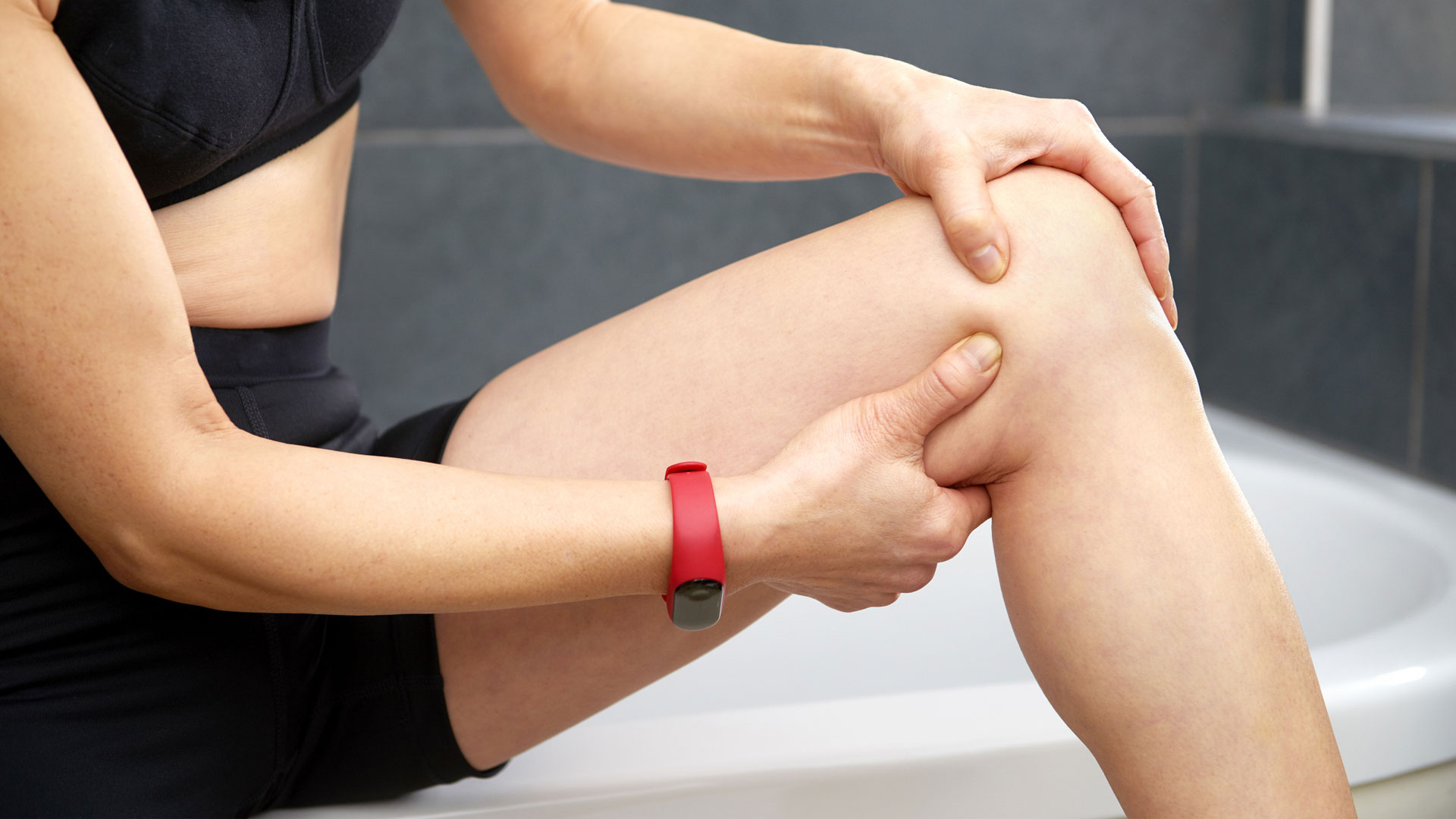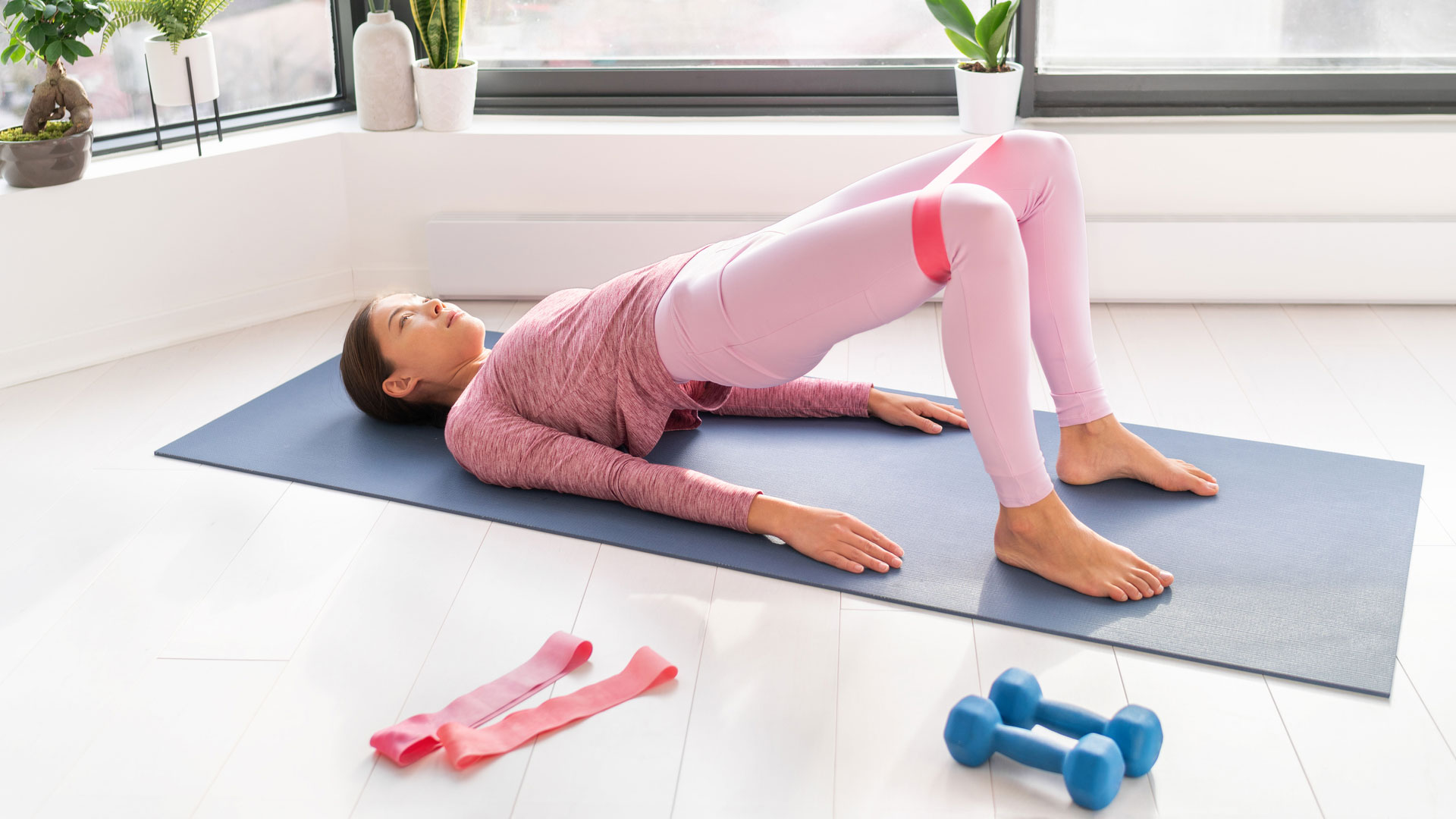How to stretch your hamstrings
Find out how to stretch your hamstrings properly to prevent and ease injuries.

Want to know how to stretch your hamstrings properly? Whether you are suffering from a hamstring injury, tight hamstrings, or want to prevent injury, our team of experts really gets to grips with the power of a good hamstring stretch.
Your hamstrings are made up of three major thigh muscle groups and involved in major movements of daily life, such as standing and walking. When standing, the line of gravity passes behind the hip, producing an extension motion that needs to be counterbalanced by the hip flexors, as explained in a report by the Frontiers in Physiology. Your hamstrings are prone to strain-related injuries, due to that eccentric action on joint positions during physical activity, according to a paper in the British Journal of Sports Medicine.
Properly spending time stretching your hamstrings daily before and after a workout has been shown to benefit and improve hamstring flexibility and range of motion, according to a study in Medicine & Science in Sports & Exercise. (If you're wondering, "What does stretching do to your body?", read our feature on the topic to learn more.)
"Think of your muscles as chewing gum: if you try to stretch chewing gum when it’s cold it will break. In the case of chewing gum or muscle that has been warmed up from activity, there is greater potential for stretching and less chance of injury." Tim Blakey Physio, Personal Trainer and Creator of the online training platform PRIMEBODY told Live Science.
Have you wondered – what does stretching do to your body? Read on to find out how to stretch your hamstrings with some simple, yet highly effective moves. Why stop at your hamstrings? LiveScience has listed 8 benefits of stretching here.
Mobility stretching at the beginning of your workout
Ever just rush into a workout without properly warming your body up in preparation? A light mobility sequence is key before any workout to really warm your muscles up, plus this will improve your mobility, reduce stiffness, help prevent injury and prepare the hamstrings prior to a workout, as shown by a 2019 paper from the Journal of Sports Science and Medicine.

"Despite popular belief stretching at the end of the workout is not the best thing you can do for your hamstrings or any muscles you feel are too tight. Mobility work at the start of a workout is far more effective at lengthening and maintaining healthy hamstrings and gaining full range of motion during activity," Blakey added.
Get the world’s most fascinating discoveries delivered straight to your inbox.
If you exercise regularly and include static stretching in your routine, you may wonder what the difference between static and mobility stretching is. Blakey explains all: "Mobility stretching with movement takes muscles through their full range of motion, this stimulates the fascia and inner sensors inside of your muscles that feedback to your brain and tell your brain that it is okay to let the muscle achieve its fuller length. Stretching or lengthening of a muscle is far more to do with 'neurological adaptation' (how our brain talks to our muscles) rather than immediate actual physical lengthening of muscle fibers."
Timing is key: Aim for longer stretches
When it’s time to stretch your hamstrings after a class, a quick 10-second stretch on each hamstring isn’t as effective as you think it might be. The more time you spend repeatedly moving in and out of each posture with steady, controlled movement the better chance you have in avoiding hamstring stiffness and injury prevention. "If static stretching feels nice at the end of a session by all means you can do it, however most people do not hold a stretch for anywhere near long enough to have a beneficial effect. When holding a stretch at the end of a workout try to maintain a deep stretch for at least 60 seconds, or around two minutes, if you can handle it rather than a quick 15 seconds," Tim Blakey said. This fact is also backed by The Mayo Clinic.
The resistance band hamstring stretch
The benefits of a hamstring stretch with an added resistance band go without saying; this is good to really mobilize the fascia as well as muscle. A 2020 study in the Journal of Sports Science and Medicine demonstrated that tissue flossing (with a resistance band or towel) aims to improve range of motion, reduce pain, and enhance injury prevention. Tim Blakey explained how to perform an effective hamstring stretch using a resistance band:
- Start on your back on the floor.
- Loop a resistance band around your toes and hold the band in both hands.
- Slowly pull on the band to lift your leg up to the sky (a slight bend at the knee is ok)
- The leg without the band should remain flat on the ground.
- Once close to a full stretch, keep your leg where it is in the air by holding the band. Now slowly try to extend the knee into full extension to intensify the stretch. Once you reach full stretch, slowly allow the knee to bend slightly again.
- Repeat this pulsing rhythmic stretch for 2 minutes for each leg.

If you're looking to invest in these home gym staples, we've compiled a guide to the best resistance bands you can buy.
Crossed over body hamstring stretch
Another one of Tim’s favorite moves for releasing tension on the hamstrings is the classic crossed-over body hamstring stretch, which can be performed in the gym before or after an intense session on the bike, outdoor run, or even after working at your desk all day.
- Lie on your back. Cross one leg over your torso, so your foot is out on the opposite side of your body.
- Holding the thigh, shin, or foot (if you can reach) try to straighten the knee while keeping the leg crossed over the body, spine and lower back rotated towards the outstretched foot.
- Try to keep both shoulders flat on the ground to maintain good consistent rotation up the spine as well as a stretch in the hamstring.
- Hold this stretch for 1-2 minutes on each side.
Stretching at home

Not a fan of the gym? Not a problem. You can improvise with a variety of household props that you might have at home to help you with some assisted stretches. Like all of Tim’s moves, these stretches are highly effective at mobilising the tissue of your hamstrings in different ways.
- Stand up straight with one heel resting on a small stack of books (cookbooks are great to use here)
- Keep your knees straight.
- Reach both hands toward the foot of the stretched leg. Hold your shin/calf if you can't reach the foot.
- You should be bending forward slightly from your hips over the stretched leg.
- Reach forward and feel a stretch in your hamstring behind your thigh.
- Hold the stretch for 60 seconds on each leg.
Like all forms of exercise and stretching, if you feel any form of pain you should stop and consult your doctor.
Kirsty is an accomplished writer specializing in the health, beauty and fitness industries. She has previously written for Fit&Well, LiveScience, City A.M., Global Blue, Grazia and the Sunday Telegraph in the UK.
You’ll find her running around Windsor Great Park most mornings with her youngest in the pram and her oldest scooting by her side. Kirsty loves trying/enduring the latest workouts and her latest obsession is an at-home Lagree microformer. She also enjoys rustling up nutritious family meals with fruit and vegetables harvested from her allotment.



